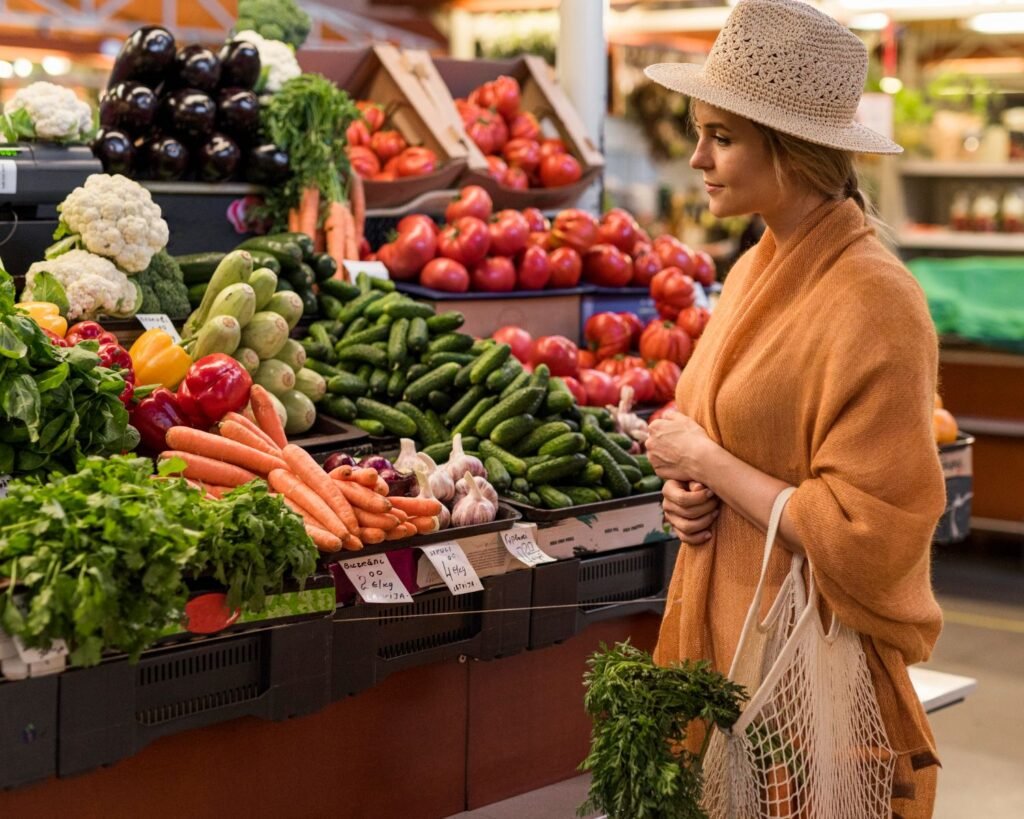Why Health Food is Much Healthier than Conventional Food
More and more people are choosing to consume organic food as it is believed to be better for both their health and the environment. But what exactly is organic food, and why is it considered healthier than traditional food? In this article, we will discuss the benefits of organic food and how it differs from conventional food in terms of production, nutrition, and safety.
What is Organic Food?
Organic food refers to food that is produced or grown without the use of artificial chemicals such as fertilizers, pesticides, antibiotics, hormones, or genetically modified organisms (GMOs). Organic farmers utilize natural methods to control pests and diseases, improve soil health, and protect the diversity of life forms. For food to be considered organic, it must meet specific standards and be certified by a recognized organization.
Exactly How is Organic Food Healthier than Traditional Food?
There are several reasons health food is healthier than conventional food, such as:
Higher nutrient degrees: Several studies show how healthy food is richer in essential nutrients, like vitamin C, iron, zinc, and antioxidants. These nutrients are crucial for a healthy body and can help prevent illnesses. Antioxidants, in particular, help protect cells from oxidative stress, anxiety, and inflammation, which are linked to aging and chronic diseases.
Consuming healthy food can help reduce exposure to harmful substances like pesticides and antibiotics. These substances can negatively impact both human health and the environment. When chemicals accumulate in the body, they can lead to a range of issues, including hormonal imbalances, neurological damage, and increased risk of cancer. Antibiotics can contribute to antibiotic resistance, making it more challenging to treat infections. Moreover, organic food typically contains lower levels of heavy metals, such as cadmium, which have the potential to harm the kidneys and bones.
Boosted taste and vigor: Many people choose to consume natural foods due to their superior taste and higher quality as compared to conventionally grown options. This is because organic produce is usually grown and harvested locally, resulting in minimal transportation and storage time. Additionally, organic produce tends to have a shorter shelf life which reduces the likelihood of synthetic chemicals or additives being added, thus preserving its natural flavor and nutritional value.

How to Choose Organic Food?
If you want to enjoy the benefits of organic food, here are some tips on how to choose organic food:
Look for labels or logos: In many countries, there are labels or logos that indicate if a food is organic or not. For example, in the United States, the USDA Organic seal means that the product is at least 95% organic. In the European Union, the green leaf logo means that the product meets the EU organic standards. However, not all organic products are labeled, so it is important to check the ingredients list and the source of the food before buying it.
Buy from local farmers or markets: One of the best ways to get organic food is to buy from local farmers or markets. This way, you can support the local economy and environment, as well as get fresh and seasonal produce. You can also ask the farmers about their farming practices and certification status.
Grow your own food: If you have the space and time, you can also grow your own organic food. This way, you can have full control over what you eat and how it is grown. You can use organic seeds, compost, mulch, and natural pest control methods to grow your own fruits, vegetables, herbs, and flowers.

How to Tell If a Food Is Organic
Organic food refers to food produced without synthetic pesticides, fertilizers, antibiotics, hormones, or genetically modified organisms (GMOs). It provides several benefits for your health and the environment. However, it can be challenging to differentiate between organic and non-organic food. In this blog post, we will provide some helpful tips to help you distinguish organic food and avoid falling for false claims.
Look for the USDA Organic Seal
One of the easiest ways to tell if a food is organic is to look for the USDA Organic seal on the package. The USDA Organic seal means that the product meets the federal standards for organic production and certification. The seal can only be used by certified organic producers and handlers who follow the USDA’s rules and regulations.
The USDA Organic seal indicates that the product contains at least 95% organic ingredients, excluding water and salt. The remaining 5% can only be non-organic ingredients that are approved by the USDA, such as certain additives or processing aids. The seal also means that the product has not been irradiated, treated with sewage sludge, or genetically engineered.
However, not all organic products have the USDA Organic seal. Some products may have other labels or logos that indicate their organic status, such as the green leaf logo in the European Union, or the Canada Organic logo in Canada. These labels or logos may have different standards and requirements than the USDA, so it is important to check their websites for more information.

Check the Ingredients List and the Source
Another way to tell if a food is organic is to check the ingredients list and the source of the food. The ingredients list can tell you what percentage of the product is organic and what kind of non-organic ingredients are used. The source of the food can tell you where and how the food was grown or made.
For example, if you see a product that says “made with organic ingredients”, it means that at least 70% of the ingredients are organic. The remaining 30% can be non-organic ingredients that are allowed by the USDA, such as certain additives or processing aids. However, these products cannot use the USDA Organic seal or claim to be organic on the front panel.
If you see a product that says “contains organic ingredients”, it means that less than 70% of the ingredients are organic. These products can list the organic ingredients on the information panel, but they cannot use any organic claims or seals on the package.
If you see a product that has no organic claims or seals at all, it means that less than 95% of the ingredients are organic. These products can still contain some organic ingredients, but they have to be listed as such on the ingredients list.
The source of the food can also help you determine if a food is organic or not. For example, if you buy fresh fruits and vegetables from a farmers market or a local farm, you can ask them about their farming practices and certification status. You can also look for a sticker or a band on the produce that has a price look-up (PLU) code. The PLU code can tell you if the produce is conventional, organic, or genetically modified. Conventional produce has four digits, organic produce has five digits starting with 9, and genetically modified produce has five digits starting with 8.

Do Your Research and Be Skeptical
The last tip on how to tell if a food is organic is to do your research and be skeptical. There are many sources of information online that can help you learn more about organic food and how to identify it. For example, you can visit the USDA’s website to find out more about their standards and certification process. You can also visit Consumer Reports’ website to find out more about their testing and ratings of organic products.
However, you should also be aware that not all information online is reliable or accurate. Some websites may have biased or misleading information about organic food and its benefits or drawbacks. Some products may also have false or exaggerated claims about their organic status or quality. Therefore, you should always verify the information you find online with other sources and use your own judgment and common sense.
.

Conclusion
Organic food is healthier than conventional food because it has higher nutrient levels, lower chemical exposure, better taste, and freshness. Organic food is also better for the environment because it reduces pollution, soil erosion, water consumption, and greenhouse gas emissions. To choose organic food, you can look for labels or logos, buy from local farmers or markets, or grow your own food. By eating organic food, you can improve your health and well-being while also contributing to a more sustainable world.
Organic food is food that is produced without using synthetic chemicals or GMOs. Organic food has many benefits for your health and the environment, but it can also be hard to tell if a food is really organic or not. To identify organic food, you can look for the USDA Organic seal, check the ingredients list and the source of the food, or do your research and be skeptical. By following these tips, you can make sure that you are buying and eating genuine organic food.
ABOUT ADSENATOR INFO BLOG SITE
Adsenator is not just a typical blog site; it’s a digital marketing powerhouse that serves as a valuable resource for technology enthusiasts, bloggers, and those passionate about computer networking, computer programming, and computer systems.